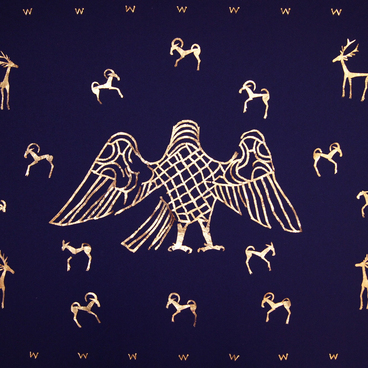During archaeological excavations led by Doctor of Historical Sciences Andrey Mikhailovich Oblomsky in 2010, an iron spearhead was discovered at the site of an ancient settlement. It has a sub-triangular blade with sides that ended in a trapezoid flange. During the manufacturing process, the artisan attached strips for securing the shaft with the help of three rivets. The shaft holder was broken at the site of the third rivet, which had a special hole on the flange of the blade.
The objects that were discovered by researchers in Poland were made in a similar way. Items from this country are spears that were remade from the fragments of spatha sword blades — straight and long double-edged swords.
This type of weapon has been widely used since the 2nd century. The late Roman spatha had a double-edged wide blade, which slightly tapered towards the point. The length of the blade ranged from 60 to 70 cm, and the width was 5–6 cm, the total length was in the range of 70–90 cm.
A long double-edged sword was intended for slashing. Spathas were common among both the Romans and the barbarians. Traditionally in Central Europe, spearheads were forged from a single piece of metal.
Similar spearheads, which were made from two pieces (the blade is separate from the flange), can be found in the east — in the late Sarmatian and Hunnic territories from the Volga region to Kazakhstan in complexes of the 4th and 5th centuries.
For the Upper Don region, the spearhead from Ksizovo is unique. The special role of this product, probably ceremonial, is evidenced by the remains of copper that have been preserved on the lower part of the blade, on the outer sides of both strips for attaching the shaft and inside on the lower mark.
Apparently, after manufacturing, the spearhead was dipped into molten non-ferrous metal. Spearheads with a thin layer of copper are found among the Roman weapons. They were part of the standards of military units. The spear from Ksizovo is clearly not Roman, but probably it performed the same function under the influence of Roman traditions.
The objects that were discovered by researchers in Poland were made in a similar way. Items from this country are spears that were remade from the fragments of spatha sword blades — straight and long double-edged swords.
This type of weapon has been widely used since the 2nd century. The late Roman spatha had a double-edged wide blade, which slightly tapered towards the point. The length of the blade ranged from 60 to 70 cm, and the width was 5–6 cm, the total length was in the range of 70–90 cm.
A long double-edged sword was intended for slashing. Spathas were common among both the Romans and the barbarians. Traditionally in Central Europe, spearheads were forged from a single piece of metal.
Similar spearheads, which were made from two pieces (the blade is separate from the flange), can be found in the east — in the late Sarmatian and Hunnic territories from the Volga region to Kazakhstan in complexes of the 4th and 5th centuries.
For the Upper Don region, the spearhead from Ksizovo is unique. The special role of this product, probably ceremonial, is evidenced by the remains of copper that have been preserved on the lower part of the blade, on the outer sides of both strips for attaching the shaft and inside on the lower mark.
Apparently, after manufacturing, the spearhead was dipped into molten non-ferrous metal. Spearheads with a thin layer of copper are found among the Roman weapons. They were part of the standards of military units. The spear from Ksizovo is clearly not Roman, but probably it performed the same function under the influence of Roman traditions.


